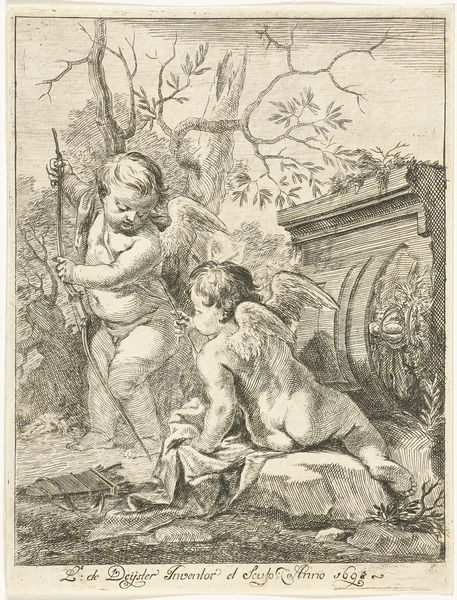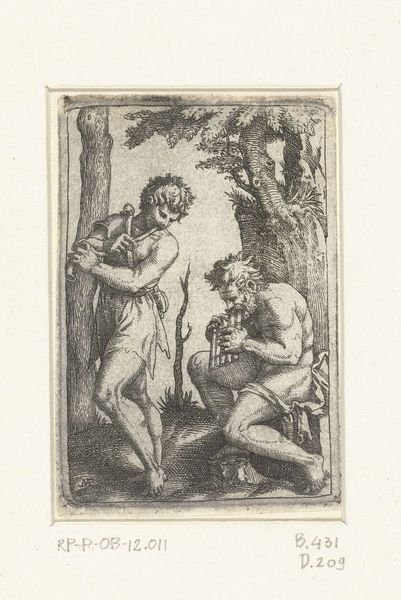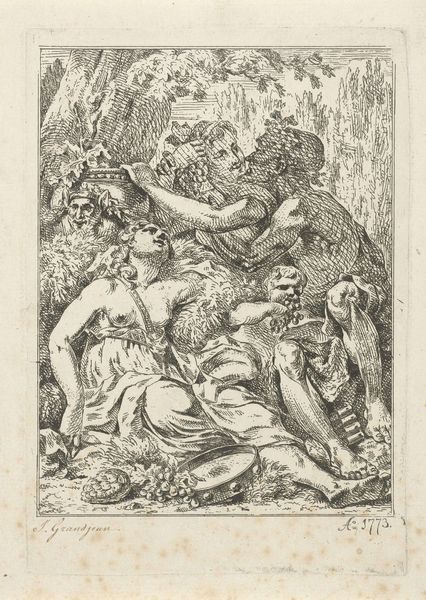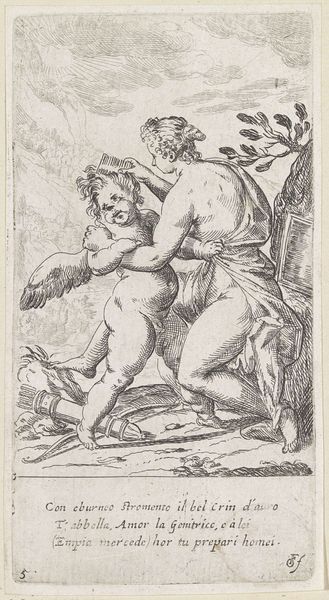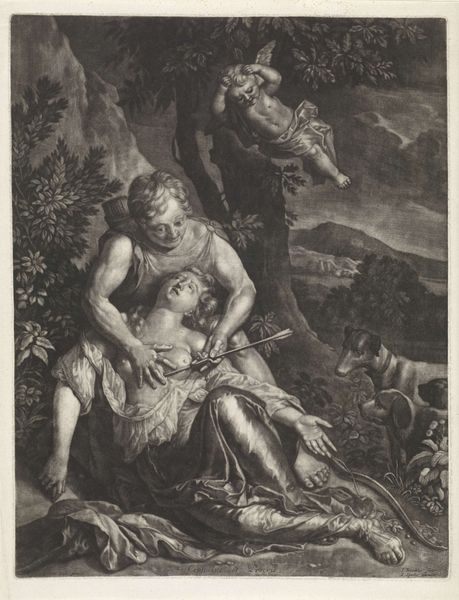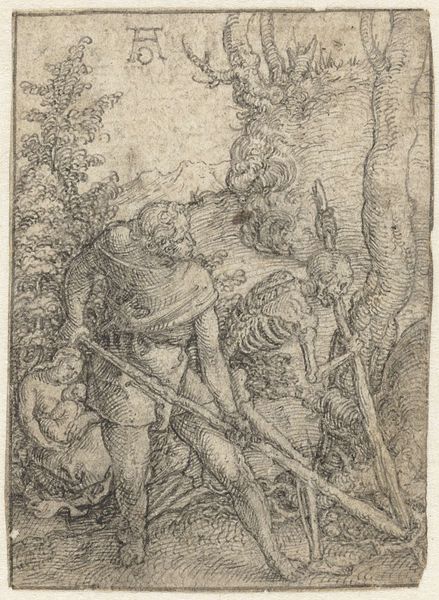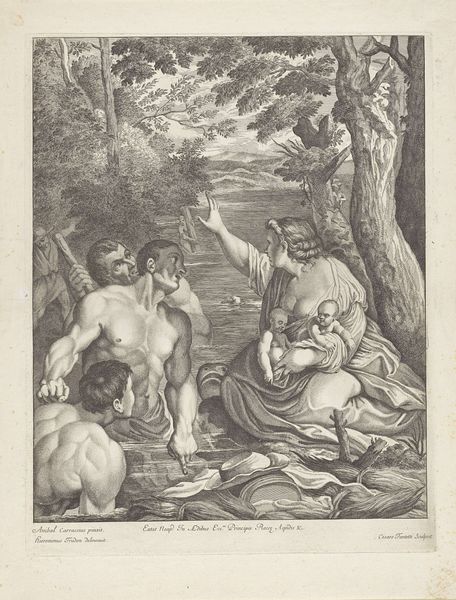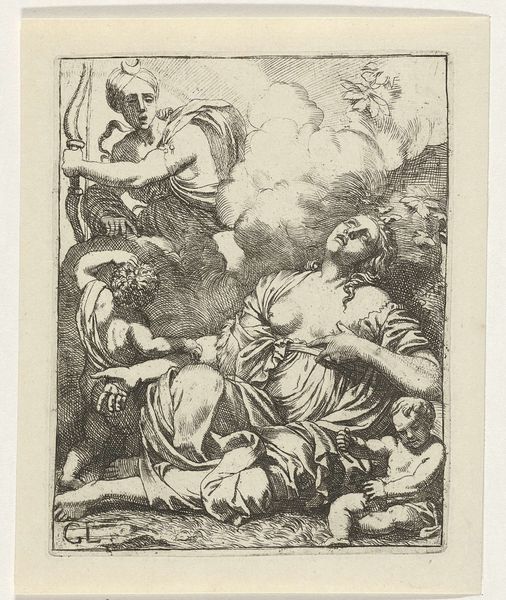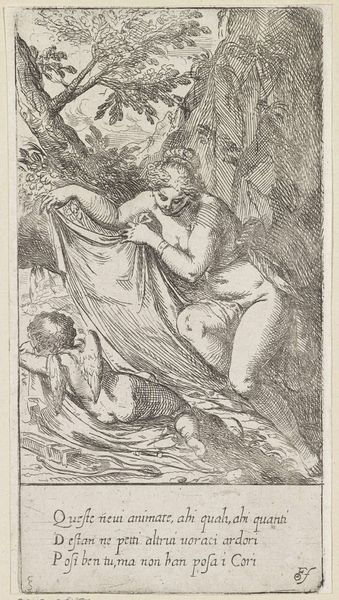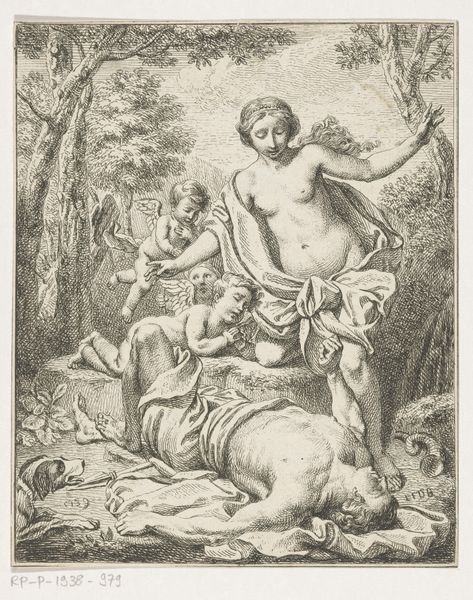
Man en jonge vrouw bij slapende naakte man voor bosrand 1510 - 1527
0:00
0:00
marcantonioraimondi
Rijksmuseum
drawing, intaglio, engraving
#
drawing
#
intaglio
#
pencil sketch
#
old engraving style
#
landscape
#
figuration
#
11_renaissance
#
pencil drawing
#
line
#
history-painting
#
italian-renaissance
#
nude
#
engraving
Dimensions: height 96 mm, width 82 mm
Copyright: Rijks Museum: Open Domain
Editor: So, this is "Man en jonge vrouw bij slapende naakte man voor bosrand", or "Man and Young Woman with Sleeping Nude Man Before Woodland Edge." It's an engraving by Marcantonio Raimondi, made sometime between 1510 and 1527. It's quite striking - there's this intense, almost theatrical quality to the figures and their gestures. How would you interpret this work within its historical context? Curator: That's a great starting point. Considering the Italian Renaissance, we need to think about the rediscovery of classical antiquity and its influence. Notice how the idealized nude male figure evokes classical sculpture. This isn't just an artistic choice, it's a statement about cultural aspirations. Raimondi disseminated the artistic ideas circulating, often in very restricted circles, at the time. Think of how engravings facilitated the spread of these ideas and challenged established norms. Where do you think this places Raimondi in terms of his contribution? Editor: It's almost like he was democratizing art by making it accessible through prints! I wonder about the narrative, though. Is it illustrating a specific story, or is it more allegorical? The woman's pointing gesture is intriguing. Curator: Exactly! It prompts us to question what's happening. The ambiguous narrative, the blend of classical forms with contemporary life—this challenges viewers to interpret. Could this image be reflecting the social anxieties or intellectual ferment of the time? Perhaps concerns about morality, or even humanist philosophies questioning humanity's place in nature. Also consider what the printing process and circulation, potentially wider than a painting, means for who gets to consider these questions. Editor: So it's not just about the image itself, but also about who it's speaking to and what conversations it sparks. It completely changes the way I think about the Renaissance, which tends to be perceived in a very focused way now. Curator: Precisely! That interaction between the artwork, its social moment, and its circulation, creates a vibrant dialogue about art and meaning. And now hopefully, our listeners have more angles into Renaissance Art's intersection with the society.
Comments
No comments
Be the first to comment and join the conversation on the ultimate creative platform.
